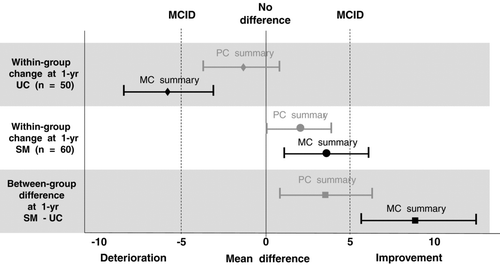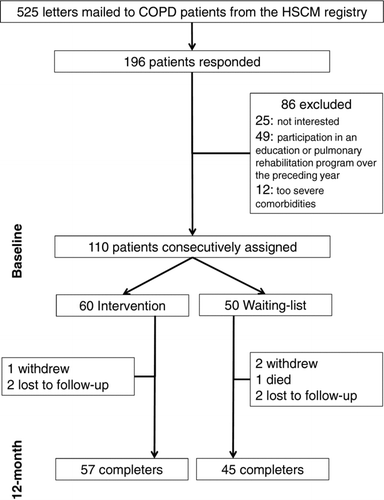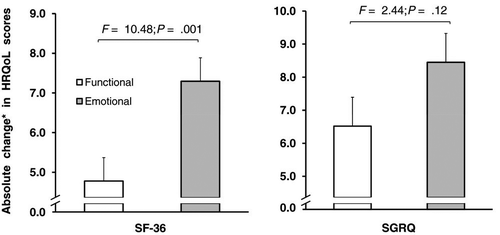Figures & data
Table 1. Baseline characteristics of participants
Figure 2. Results at 12-month post-baseline on emotional and functional subscales scores of SGRQ. Notes: Data are expressed as adjusted* mean difference with 95% CI; *adjusted for covariates, i.e., age, sex, GOLD stage, smoking status, civil status and baseline values
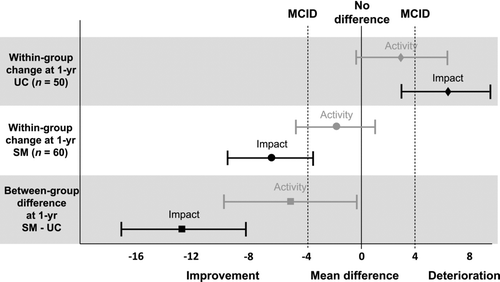
Figure 3. Principle of interpretation of fi gures. Notes: Reproduced from (33). This fi gure shows how we can interpret the results in relation to the mean difference and 95% CI, and how these appear in relation to the null (zero value) of no intervention difference and the pre-specifi ed minimal clinical important difference in HRQoL outcomes.
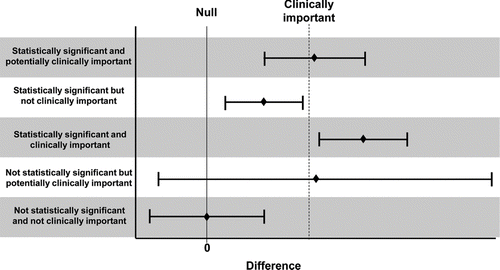
Figure 4. Results at 12-month post-baseline on emotional and functional subscales scores of SF-36. Notes: Data are expressed as adjusted* mean difference with 95% CI; PC = Physical Component summary scores of SF-36; MC = Mental Component summary scores of SF-36; *adjusted for covariates, i.e., age, sex, GOLD stage, smoking status, civil status and baseline values.
